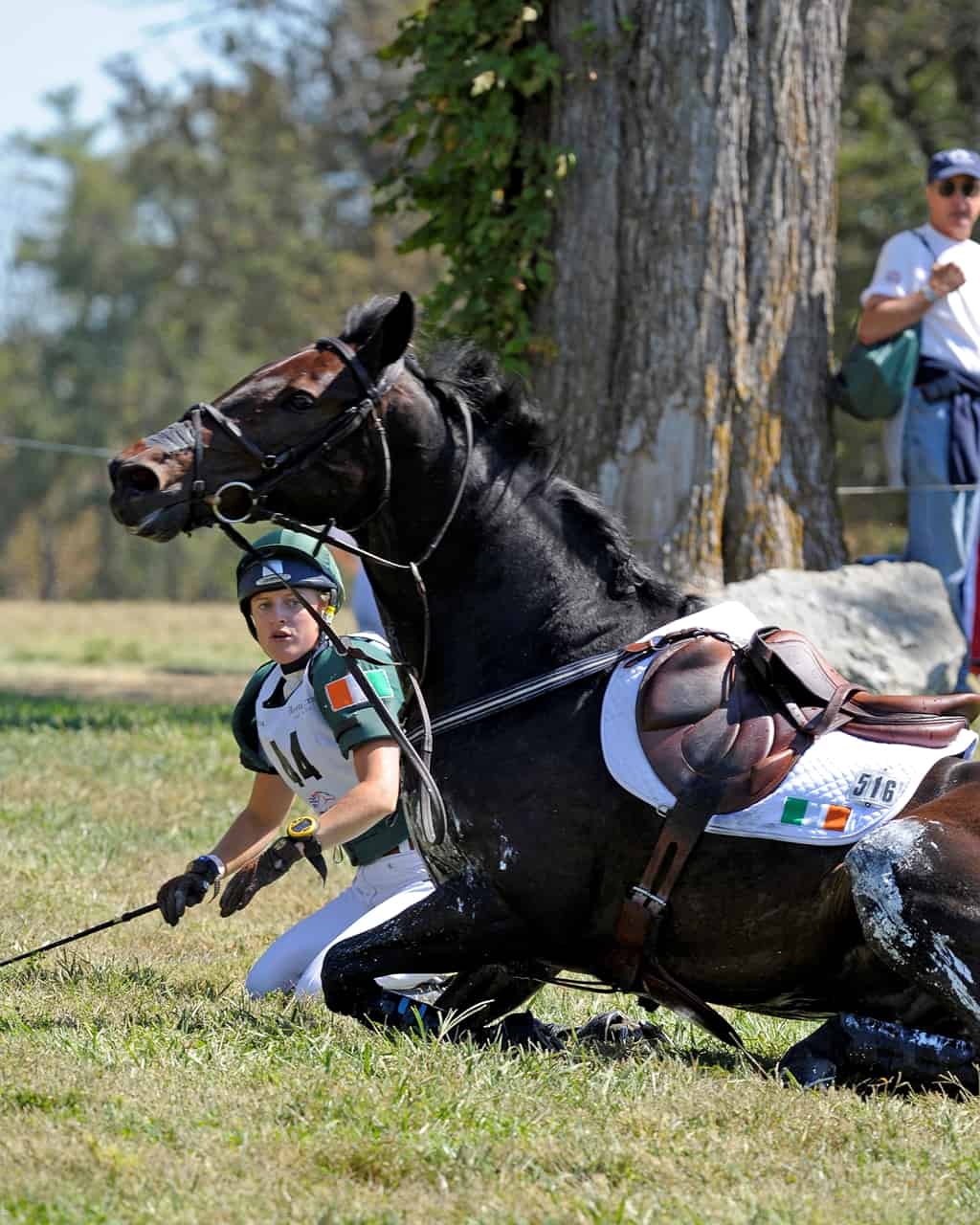The ‘Right Way’ to Fall Off a Horse
- Topics: Article, Safety, Welfare and Industry

Attendees of inaugural Horse Industry Safety Summit, held April 23 at University of Kentucky’s (UK) Spindletop Hall, in Lexington, had no time to be bored, especially when Danny Warrington, who founded Landsafe Equestrian with his wife Keli, approached the podium.
Throughout the thoroughly engaging presentation, he showed videos and images of riders parting ways with their mounts—both correctly and incorrectly. Warrington slowed down the video to show the audience at what point in the fall rider decisions either helped or hindered their safety.
Warrington believes there is a gap in rider education: teaching riders how to fall safely. Deeply committed to rider safety, the Warringtons created Landsafe with three main goals: save lives, reduce injuries, and increase safety education of parents and riders
Create a free account with TheHorse.com to view this content.
TheHorse.com is home to thousands of free articles about horse health care. In order to access some of our exclusive free content, you must be signed into TheHorse.com.
Start your free account today!
Already have an account?
and continue reading.
Written by:
University of Kentucky College of Agriculture, Food, and Environment
Related Articles
Stay on top of the most recent Horse Health news with















